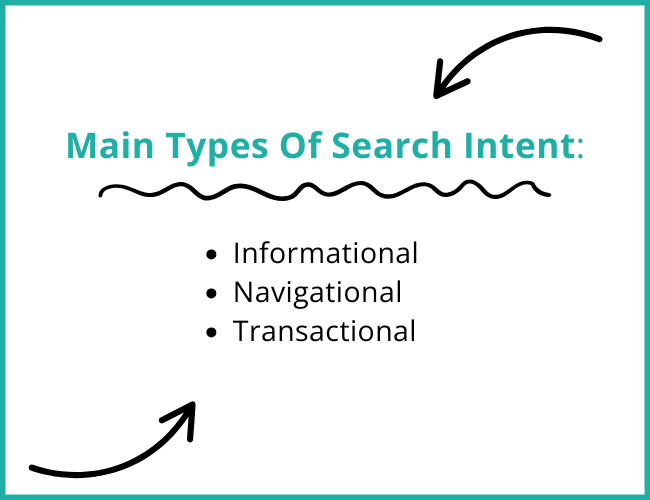The Ultimate Keyword Research Checklist
Blogs | SEO
Written By: Lauren Davison
Blogs | SEO
Written By: Lauren Davison
Getting started with keyword research
When it comes to SEO, one of the most critical tasks to get right is keyword research. Without it, your SEO strategy can quickly lose direction. Whether you’re trying to make a name for yourself or aiming to expand your reach, a thorough keyword research checklist is key to boosting your visibility and driving traffic to your website.
But how do you start? What steps should you follow? And how do you know if you’re doing it right? Don’t worry. We’ve got you covered!
In this blog, we’ll walk you through the essential keyword research process, offering a practical checklist to guide you every step of the way.

1. Understand Your Target Audience
Before jumping into keyword research, it’s essential to understand who your target audience is. This is the foundation of your entire keyword strategy.
Knowing your customers’ pain points, goals, and interests will directly influence the keywords you choose. If you don’t have a clear understanding of who you’re trying to reach, you risk focusing on search terms that won’t attract the right audience.
Understanding your audience also means identifying where they are in the buyer’s journey. Are they just starting to look for information, or are they ready to make a purchase? This knowledge helps you tailor your keyword research process, ensuring you focus on keywords that are relevant to your audience’s needs.
2. Brainstorm Seed Keywords
Now that you have a clear understanding of your target audience, it’s time to begin your keyword research checklist with seed keywords. These are broad terms directly related to your business, products, or services. Seed keywords are the starting points for generating more specific, long-tail keywords.
For example, as a digital marketing agency, our seed keywords might include phrases like ‘digital marketing,’ ‘SEO services,’ or ‘online marketing.’ These will serve as a foundation for discovering more niche keywords that can help you drive traffic.
The key here is brainstorming. Don’t worry about getting everything perfect at this stage. The seed keyword list should be flexible, evolving as you uncover new terms and narrow down your focus. Think about variations or questions people might ask when looking for services similar to yours.

3. Use SEO Tools For keyword research
Before you dive into these tools, it’s worth running a SEO site audit to check for any technical issues that could affect your rankings. Once your site is in good shape, you take the next step in your keyword research process.
These tools will provide a wide range of suggestions that you can filter and refine. Here are some of the most popular SEO tools you can use to uncover valuable keyword opportunities:
- Google Keyword Planner: This helps you discover keywords related to your seed terms and provides data on search volume and competition. You can also filter by location to get a more targeted approach.
- SEMrush: SEMrush offers detailed insights into keyword volume, competition, and related search queries. It’s a premium tool, but well worth the investment for advanced keyword research, especially if you want to analyse competitor data and organic search performance.
- Ahrefs: Ahrefs is another helpful tool that helps you find keywords and evaluate the competition. It’s valuable for understanding search volume and backlink strategy, which helps inform your content.
- Ubersuggest: Ubersuggest is a free tool that offers a lot of valuable data, including keyword suggestions, search volume, and SEO difficulty scores.
4. Analyse Search Intent
It’s important to remember that not all keywords are created equal. While some keywords may be highly popular, they may not always align with what your target audience is looking for. This is where search intent comes into play.
Search intent is the reason behind a user’s search. Are they looking for information? Are they ready to make a purchase? Knowing this will help you prioritise keywords that align with your audience’s current stage in the buyer’s journey.
For example, if someone searches for ‘best SEO tools,’ their intent is likely informational. They want to learn more about available options. But if they search for ‘buy SEO tools,’ their intent is transactional. This means they’re ready to make a purchase. Matching keywords with the correct intent helps you create content that’s more likely to engage and convert users.

5. Evaluate Keyword Metrics
Once you’ve gathered a list of potential keywords, it’s time to evaluate them based on three key metrics:
- Search Volume: This metric tells you how many people are searching for a keyword each month. High search volume keywords have the potential to drive more traffic to your site but are also more competitive. The higher the volume, the more effort it might take to rank.
- Keyword Difficulty (Competition): This tells you how difficult it is to rank for a particular keyword. While high search volume keywords may seem appealing, they often come with high competition. It’s essential to balance search volume and competition, especially if you’re a smaller business.
- Click-Through Rate (CTR): This measures how often people click on a search result when they see it. Some keywords may have high search volume but low CTR, meaning they don’t effectively drive traffic even though they’re popular. Ensure you choose keywords that have a solid CTR to attract quality traffic.
6. Group Keywords by Topic
After gathering a list of potential keywords, grouping them by topic helps you build a more organised content strategy. This approach enables you to cover a broad spectrum of related terms rather than focusing solely on individual keywords.
For example, at Midland Marketing, we might group keywords like ‘SEO services,’ ‘SEO strategy,’ and ‘SEO tools’ together under the topic of ‘SEO.’ This makes your content more thorough, increasing the chances of ranking for multiple related queries.
By grouping keywords in this way, you ensure your content covers all aspects of a subject. It can also help position you as an authority in a particular area, helping you rank for broader, more competitive terms over time.

7. Consider Long-Tail Keywords
Long-tail keywords are highly specific phrases with three or more words. While they often have lower search volume, they tend to have lower competition and higher conversion rates due to their specificity. For example, instead of targeting a broad keyword like ‘SEO,’ you might target a more specific long-tail variation such as ‘SEO tips for small businesses.’ These terms are more aligned with user intent, and they make it easier to rank in search results.
If you’re not sure how long-tail keywords stack up against short-tail ones, our comparison of long-tail vs short-tail keywords can help clarify the differences and show you when to use each effectively.
Including long-tail keywords in your keyword research checklist helps ensure that your SEO strategy is focused on attracting highly qualified traffic that’s more likely to convert.
8. Refine Your List
By this point in your keyword research checklist, you should have a sizable list of potential keywords. But not all of them will be worth targeting. Take some time to refine your list by removing keywords that:
Are too broad or vague
Are highly competitive terms with little chance of ranking
Don’t match your content or business goals
The goal is to have a focused list of keywords that will give you the best chance of ranking and driving traffic. A refined list helps you prioritise your efforts on the most impactful keywords and ensures your SEO strategy remains manageable and effective.

9. Use Your Keywords Effectively
Once you’ve refined your list of keywords, it’s time to put them to work. Make sure to incorporate keywords thoughtfully so that your content remains readable, informative, and valuable to your audience.
Here are some key places to incorporate your target keywords:
- Page Titles: Including your primary keyword in the title tag of your webpage can significantly impact SEO rankings.
- Meta Descriptions: Write a compelling meta description that includes your target keywords. This is your chance to entice users to click through to your site.
- Headings and Subheadings: Use keywords naturally within the headings and subheadings of your content to improve both SEO and user experience.
- Body Content: Include your keywords in a way that’s natural and relevant to the topic, avoiding keyword stuffing.
- URLs: Including your target keywords in the URL structure of your page helps with indexing and relevance.
10. Monitor and Adjust Your Strategy
Keyword research doesn’t stop once you’ve optimised your content. SEO is an ongoing process, and it’s essential to track your performance and adjust your strategy as needed.
Use tools like Google Analytics and Google Search Console to monitor how your content is performing. If certain keywords aren’t driving traffic or engagement, it may be time to revisit your list and refine your approach.
If you find that some keywords aren’t driving the results you expected, don’t hesitate to revisit your keyword research checklist. The digital landscape is always changing, so adjusting your strategy ensures your SEO efforts remain effective.

Conclusion: Stay Consistent and Keep Optimising
Keyword research is a vital part of the SEO process, and a solid keyword research checklist can help you uncover opportunities for growth. By following this guide, you’ll have a clear roadmap to improve your rankings, drive more traffic, and ultimately, grow your online presence.
Remember, the keyword research process is not a one-time task. SEO requires continuous refinement. Regular updates to your keyword research process, along with consistency in your efforts, will keep your content competitive and aligned with the latest search and SEO trends in 2025.
By staying on top of your keyword strategy, you’ll unlock SEO success and pave the way for long-term growth!

Written by - Lauren Davison
Introducing Lauren – one of our content writers who has a flair for SEO and creative strategy!
With a Master’s Degree in Creative Writing, Lauren has niched down into SEO and content writing.
Outside of work, she loves watching the darts, reading and the pub on the weekend.
Want some more?
Latest Insights & News

Revolutionising Marketing: The Rise of Situational Content Strategies
Situational content strategies involve tailoring content to specific moments, contexts, or audience behaviours. By aligning content with real-time trends, seasonal needs, and user intent, brands can increase relevance, improve engagement, and strengthen SEO performance.

Smart Ways to Identify and Fill Content Gaps Fast: A Complete Strategy Guide
Content gaps refer to missing information, unanswered questions, or underserved topics in your existing content. Identifying these gaps helps you create targeted, high-value pages that improve search visibility, satisfy user intent, and outperform competitors.

Reciprocal Links in SEO: Do They Still Boost Rankings or Risk Penalties?
For the keyword “reciprocal links SEO,” focus on explaining how reciprocal linking works today. Reciprocal links are not harmful by default, but Google can flag excessive or manipulative link exchanges. To stay safe, only exchange links when they are contextually relevant, natural, and valuable to users.





This is a solid reminder of how crucial it is to get the groundwork right with keyword research. I’ve found competitor gap analysis to be especially effective—any thoughts on where it fits in a checklist like this?
Thanks for your comment! Thanks for the comment! Competitor gap analysis is a great shout. I might place it just after seed keyword research, as it helps validate your ideas and uncover gaps based on what others in your space are ranking for. Definitely something we could cover in a future blog!